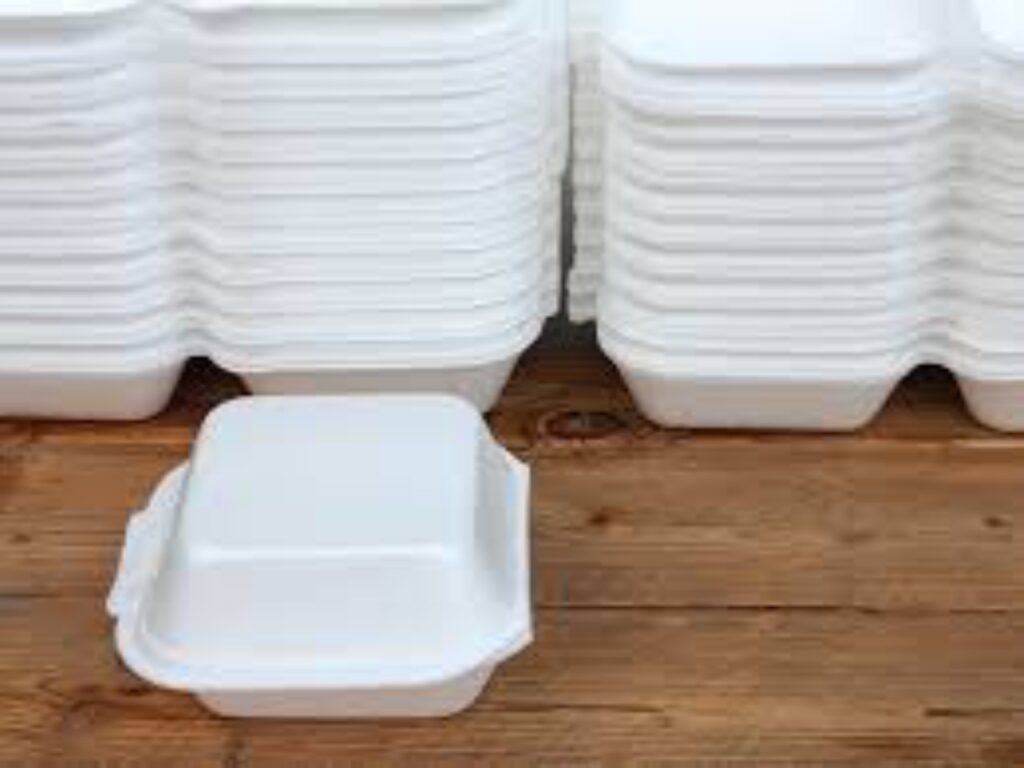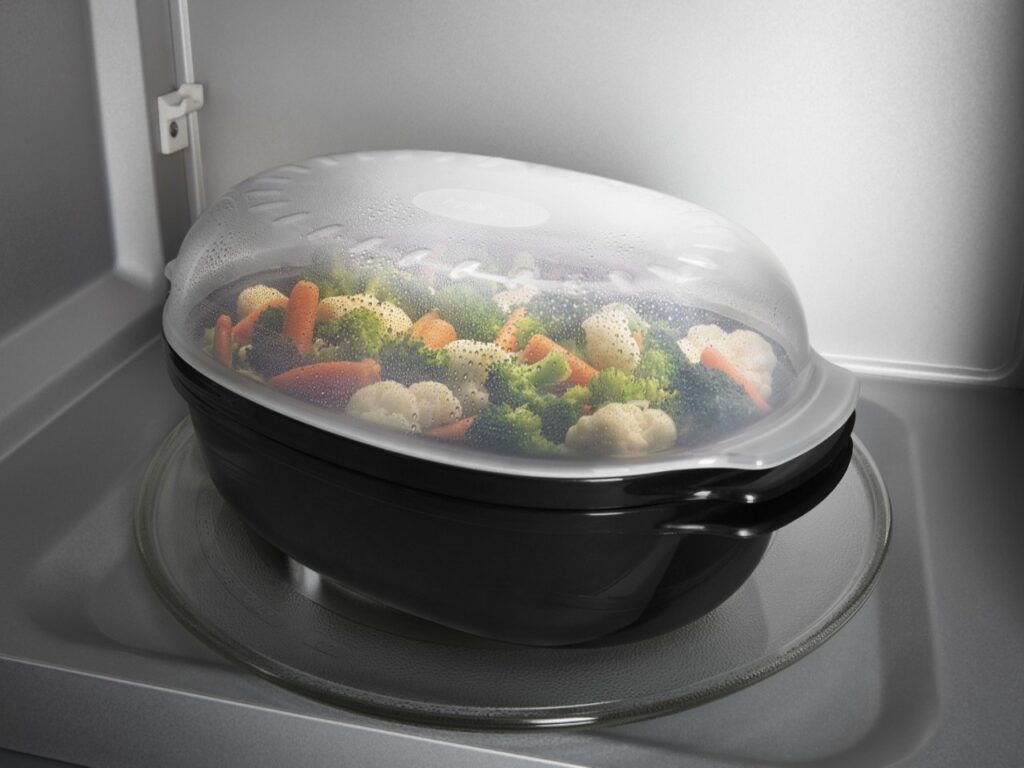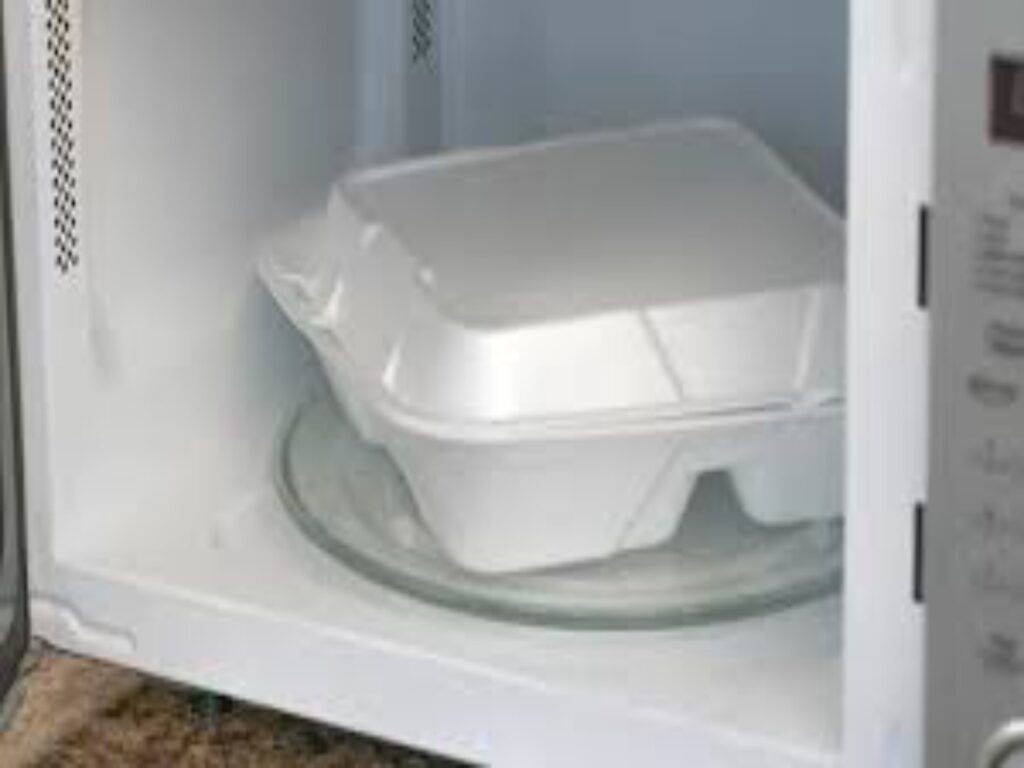Can you microwave Styrofoam?This common dilemma, pitting convenience against potential health risks, confuses many of us.
The truth about microwaving Styrofoam isn’t as simple as a yes or no answer.
It depends on the type of Styrofoam, what’s in it, how long you heat it, and even the wattage of your microwave.
Getting this wrong could mean anything from a slightly warped container to potentially harmful chemicals leaching into your food.
What Exactly Is Styrofoam? Understanding the Material

Before we can answer whether you can microwave Styrofoam, we need to understand what we’re dealing with.
The term “Styrofoam” is often used generically, but it’s actually a trademarked brand name owned by Dow Chemical Company for a specific type of extruded polystyrene (XPS) foam used primarily in building insulation.
The Chemistry of Polystyrene Foam
Most disposable food containers are made from expanded polystyrene (EPS) foam, which is different from the Styrofoam brand material. Here’s how it’s made:
- Polystyrene pellets are expanded using steam and a blowing agent (usually pentane)
- The expanded beads are molded into shapes under heat and pressure
- The final product is about 95% air, making it lightweight and insulating
This structure gives EPS foam its characteristic properties:
- Excellent insulation (keeps hot things hot and cold things cold)
- Lightweight and buoyant
- Shock-absorbing qualities
- Moisture resistance
Types of Polystyrene Food Containers
Not all foam food containers are created equal when it comes to microwave safety:
- Standard EPS Containers: Typical takeout boxes, not microwave-safe
- Microwave-Safe Foam Containers: Specially designed for microwave use
- Foam Plates and Bowls: Vary in microwave safety
- Foam Cups: Some designed for hot beverages
- Foam Clamshells: Common for burgers and sandwiches
The key difference lies in how they’re manufactured and what additives they contain to withstand microwave heating.
The Science Behind Microwaving Styrofoam
To understand whether you can microwave Styrofoam safely, we need to examine how microwaves interact with the material.
How Microwaves Heat Food
Microwave ovens work by emitting electromagnetic waves that cause polar molecules (like water) in food to vibrate, creating heat through friction. This energy affects different materials in various ways:
- Microwave-Safe Materials: Allow waves to pass through or only absorb minimal energy
- Microwave-Reactive Materials: Absorb microwave energy and heat up
- Metal: Reflects microwaves, causing sparks
Polystyrene foam falls somewhere in the middle—it doesn’t absorb much microwave energy itself, but it can be affected by the heat generated in the food.
What Happens to Styrofoam in the Microwave?
When you microwave regular Styrofoam (not designed for microwave use), several things can occur:
- Warping and Melting: The heat from food can cause the foam to soften, deform, or even melt
- Chemical Leaching: High temperatures may cause styrene monomers to migrate into food
- Breakdown of Structure: The foam may become brittle or develop holes
- Release of Additives: Flame retardants or other chemicals may be released
The extent of these effects depends on factors like:
- Microwave power level
- Heating duration
- Food temperature
- Container thickness
- Presence of fats or oils in the food
FDA Regulations and Microwave-Safe Labels
The U.S. Food and Drug Administration (FDA) regulates all food packaging materials, including polystyrene foam containers.
Understanding their guidelines is crucial for determining microwave safety.
FDA Testing Requirements
For a foam container to be labeled as microwave-safe, manufacturers must demonstrate that:
- Migration Limits: The amount of substances that may transfer to food is below safety thresholds
- Temperature Resistance: The container won’t deform or release chemicals at typical microwave temperatures
- Consistency: The material performs safely under normal use conditions
Understanding Microwave-Safe Symbols
Look for these indicators on foam packaging:
- Microwave Symbol: Squiggly lines representing microwaves
- Text Label: “Microwave Safe” or similar wording
- Temperature Range: Maximum safe heating temperature
- Manufacturer Guidelines: Specific instructions for use
Important Note: Just because a container held hot food doesn’t mean it’s microwave-safe. Many foam containers are designed to hold pre-heated food but not withstand microwave heating.
Types of FDA-Approved Microwave-Safe Foam
Some specially designed polystyrene containers can safely be used in microwaves:
- Crystallized PET (CPET): Often used for microwaveable frozen dinners
- High-Temperature EPS: Modified to withstand microwave heat
- Polypropylene Foam: Different plastic chemistry, more heat-resistant
These materials have been tested to ensure they don’t leach harmful chemicals when used as directed.
Potential Health Risks of Microwaving Non-Safe Styrofoam

While the occasional microwaving of non-safe foam may not cause immediate harm, there are potential health concerns to consider with regular exposure.
Styrene Exposure
Styrene, the primary building block of polystyrene, is classified as a possible human carcinogen by the International Agency for Research on Cancer (IARC).
Potential effects of chronic exposure include:
- Neurological Effects: Headaches, fatigue, nervous system impacts
- Hormonal Disruption: May interfere with endocrine function
- Liver Damage: Shown in animal studies at high exposures
- Cancer Risk: Some evidence of increased risk with occupational exposure
It’s important to note that the amounts that might leach from food containers are much lower than occupational exposure levels.
Other Chemical Concerns
Beyond styrene, foam containers may contain:
- Plasticizers: Added for flexibility, some are endocrine disruptors
- Flame Retardants: Used to meet fire safety standards
- Colorants: May contain heavy metals
- Antioxidants: Prevent degradation during manufacturing
These additives may become more likely to migrate into food when heated.
Factors That Increase Leaching Risk
Certain conditions make chemical migration more likely:
- High Temperatures: Above 212°F (100°C)
- Fatty/Oily Foods: Many chemicals are fat-soluble
- Acidic Foods: Can break down the polymer matrix
- Alcohol Content: Increases chemical solubility
- Long Heating Times: More opportunity for migration
- Scratched/Worn Containers: Damaged surfaces release more chemicals
How to Identify Microwave-Safe Styrofoam
Not sure if your foam container is microwave-safe? Follow these guidelines:
Visual Inspection
- Look for Labels: Check for “Microwave Safe” or the microwave symbol
- Examine the Bottom: Safety information is often molded into the container
- Check Manufacturer Info: Some brands consistently use microwave-safe materials
Physical Characteristics
Microwave-safe foam often has:
- Thicker Walls: Better heat resistance
- Different Texture: May feel more rigid or crystalline
- Specific Colors: Often white or clear rather than colored
When in Doubt, Test It
If you’re unsure, try this safe test method:
- Fill the container with water
- Microwave on high for 30 seconds
- Check if the container is:
- Warped or deformed → Not microwave-safe
- Unchanged → Likely safe for short heating
Never microwave an empty foam container, as this can cause melting or even fire.
Safe Microwave Practices with Styrofoam

If you determine your foam container is microwave-safe, follow these best practices:
Preparation Steps
- Remove Lids: Unless specifically labeled as microwave-safe
- Vent the Container: Leave a corner open to prevent pressure buildup
- Transfer Fatty Foods: Especially meats, cheeses, buttery dishes
- Check for Damage: Don’t use cracked or melted containers
Heating Guidelines
- Use Medium Power: 50-70% power reduces risk of overheating
- Short Intervals: Heat in 30-second bursts, stirring between
- Monitor Closely: Watch for any warping or unusual odors
- Let Stand: Allow food to sit for a minute after heating to even out temperature
Post-Heating Checks
- Inspect Container: Discard if deformed or melted
- Smell Test: Chemical odors indicate possible contamination
- Food Appearance: Oily residue or strange colors may signal leaching
Alternatives to Microwaving Styrofoam
When in doubt about a container’s safety, consider these alternatives:
Transfer Methods
- Glass Containers: Ideal for microwave use
- Ceramic Dishes: Microwave-safe options
- Paper Plates: For short heating periods
- Silicone Containers: Flexible and heat-resistant
Non-Microwave Heating Options
- Oven Heating: Transfer to oven-safe dish
- Stovetop Reheating: Works well for saucy foods
- Steaming: Preserves moisture without container risks
Smart Storage Solutions
- Immediate Transfer: Move leftovers to microwave-safe containers when you get home
- Portion Control: Store in individual microwave-safe portions
- Labeling System: Mark containers with purchase dates and contents
Special Cases and Exceptions
Certain situations require extra caution with foam containers:
Restaurant Takeout Containers
Most standard takeout containers:
- Are not microwave-safe
- Designed for single-use transport
- May become unstable when reheated
Coffee Cups and Soup Containers
Polystyrene cups:
- Some are designed for hot liquids
- Rarely microwave-safe unless specified
- Risk of sudden collapse when heated
Frozen Dinner Trays
Some frozen meals come in foam trays:
- CPET trays are microwave-safe
- Standard EPS trays are not
- Always check packaging instructions
Disposable Plates and Bowls
Foam dinnerware:
- Usually not microwave-safe
- May melt or warp quickly
- Can release chemicals when heated
Environmental Considerations Beyond Microwave Safety
While this article focuses on microwave safety, it’s worth noting the environmental impact of polystyrene foam:
Recycling Challenges
- Not Accepted in most curbside recycling programs
- Bulkiness makes transportation inefficient
- Limited Markets for recycled polystyrene
Environmental Persistence
- Non-Biodegradable: Can persist for centuries
- Breaks into Microplastics: Pollutes waterways
- Wildlife Hazard: Animals mistake it for food
Sustainable Alternatives
- Bring Your Own Containers for takeout
- Choose Restaurants using eco-friendly packaging
- Support Bans on single-use foam products where available
Conclusion
After examining all the evidence, here’s the definitive answer:
You can microwave Styrofoam ONLY if it’s specifically labeled as microwave-safe.
For all other polystyrene foam containers:
- Don’t microwave standard takeout containers, foam plates, or cups
- Transfer food to microwave-safe dishes instead
- Follow labels and manufacturer instructions carefully
Key Takeaways
- Look for Labels: Only microwave containers marked “microwave-safe”
- Know the Risks: Non-safe foam may leach chemicals when heated
- Use Alternatives: Glass and ceramic are safer choices
- Heat Carefully: Even microwave-safe foam has limitations
- When in Doubt: Transfer food to a known safe container
By following these guidelines, you can enjoy the convenience of quick meals without compromising your health or safety.
Remember that occasional accidents (microwaving a non-safe container briefly) aren’t cause for panic, but making it a habit could pose health risks over time.
The safest approach? When you get takeout in foam containers, take a moment to transfer leftovers to microwave-safe dishes before refrigerating.
